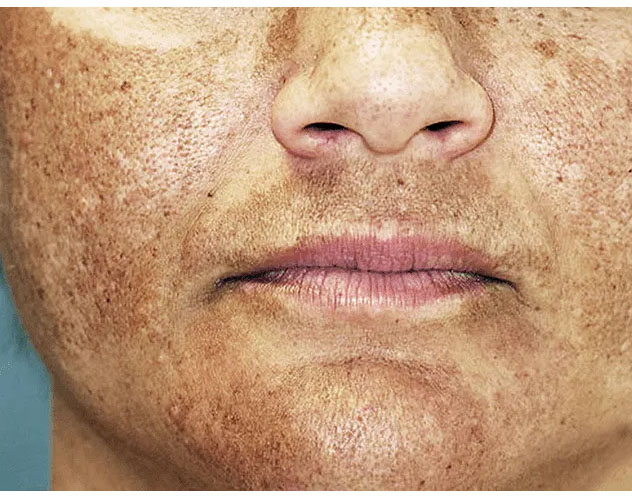Melasma
Overview: Melasma is a common skin condition characterized by the development of brown or grayish-brown patches on the face, particularly on areas exposed to the sun. While it can affect both men and women, it is more prevalent in women and is often associated with hormonal changes.
Overview: Melasma is a common skin condition characterized by the development of brown or grayish-brown patches on the face, particularly on areas exposed to the sun. While it can affect both men and women, it is more prevalent in women and is often associated with hormonal changes.
Types of Melasma:
- Epidermal Melasma:
- The excess pigmentation is concentrated in the top layers of the skin (epidermis).
- Responds relatively well to treatment.
- Dermal Melasma:
- Pigmentation extends into the deeper layers of the skin (dermis).
- May be more challenging to treat compared to epidermal melasma.
- Mixed Melasma:
- A combination of both epidermal and dermal involvement.
- Represents a common form of melasma.
Symptoms of Melasma:
- Hyperpigmented Patches:
- Dark, irregularly shaped patches typically appear on the face, including the cheeks, forehead, bridge of the nose, and upper lip.
- Symmetrical Distribution:
- Melasma often occurs in a symmetrical pattern, affecting both sides of the face.
- Sun Exposure Aggravation:
- Sun exposure tends to exacerbate melasma, and affected areas may darken more than the surrounding skin.
- No Physical Symptoms:
- Melasma is primarily a cosmetic concern and does not cause physical discomfort or pain.
- Common in Women:
- While men can develop melasma, it is more commonly seen in women, particularly during pregnancy (chloasma or "mask of pregnancy") and with the use of oral contraceptives.
Causes and Risk Factors:
- Hormonal Changes:
- Fluctuations in hormones, such as those during pregnancy, birth control use, or hormone replacement therapy, can trigger melasma.
- Sun Exposure:
- Ultraviolet (UV) light exposure is a significant factor in the development and exacerbation of melasma.
- Genetic Predisposition:
- A family history of melasma may increase the likelihood of developing the condition.
- Cosmetic Products and Procedures:
Certain cosmetics or procedures that irritate the skin can contribute to melasma.

